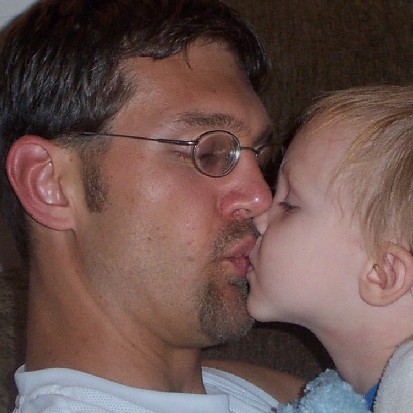What the Birth of Jesus Says About You
The trimmings of the season were all around me during my devotions this morning: the massive Christmas tree next to my oversized chair, the glow from the seasonal lights over the fireplace reflecting off the pages of my Bible, mellow carols quietly playing on the stereo in the next room. It seemed a strange setting in which to read the passion narrative, but since that’s where my Bible reading plan has me this time of year, that’s what I read—John 19:16-42.
Surrounded by all these reminders of the birth of Christ, I read and pondered John’s description of the death of Christ. All at once I was struck by the parallel details in the two accounts, similarities I had never put together before. Here’s what I saw…
Both are marked by stunning humiliation. The humiliations of His birth—the social status of His family, the tedious journey to Bethlehem, the rejection at the inn, the manger-bed—these details seem warm and wonderful to us now, all wrapped up in the packaging of Christmas as they are; but they are still humiliations nonetheless. Those of His death are equally well known to us—the nakedness and mockery, the accompaniment by known criminals, the abandonment by His closest friends, the absolute disgrace of execution by crucifixion.
Both offer a special notification to others about who Jesus was. At Christ’s birth the special announcement came to the shepherds via the angels. At His death it was via a sarcastic sign posted above His head by Pontius Pilate.
Both are accented by a high concentration of fulfilled prophecies. The prophesies surrounding His birth (His name, the virginity of His mother, the location in Bethlehem, etc.) and those surrounding His death (the dividing of His garments, His thirst, the piecing of His hands and feet and side, His burial in a borrowed tomb, etc.) make these two periods the most prophesy-intensive of His entire life.
Finally, both offer unusual details about how He was clothed and where He was laid. At both His birth and His death He was wrapped in linen cloths, a peculiar little detail that has always made me curious about why the biblical authors felt inclined to include it. In addition, both accounts are careful, for whatever reason, to tell us exactly where He was laid: in a manger at His birth and in a friend’s tomb at His death.
So what’s the point of it all? Here’s what I think… It seems to me that these details are little hints that we ought to see the birth of Christ in light of the death of Christ. The romantic details of Bethlehem foreshadow the horrific details of Golgotha. In other words, we miss the point of Christ’s birth if we don’t recognize the point of His death.
But just in case we miss these subtle details, there is explicit evidence right in the birth narratives that this event points directly to the cross. For example, the angels told the shepherds that the one born in Bethlehem was “a Savior” (Lk 2:11). And the song sung by the angel choir pointed toward our forgiveness when they sang: “Glory to God in the highest, and on earth peace among those with whom he is pleased!” (Lk 2:14) Simeon’s prophecy also foreshadowed the crucifixion when he told Mary: “Behold, this child is appointed for the fall and rising of many in Israel, and for a sign that is opposed (and a sword will pierce through your own soul also), so that thoughts from many hearts may be revealed.” (Lk 2:34-35) Clearly, Christ’s birth cannot be separated from His death.
One more point about these similarities between the manger and the cross… Though these details come in similar form at Christ’s birth and at His death, they have directly opposite effects on some people. Some, like the shepherds, receive the announcement of the angels with gladness, but they also, like the Jews, receive the declaration of Pilate’s sign with derision. Some who love the humiliation of His birth scoff at the humiliation of His death. Some who find the linen wrappings around the babe in the manger to be irresistibly romantic also find the burial shroud around the corpse in the tomb to be irreparably repulsive.
So what does all this say about you? These parallels are meant to forge an unbreakable link between Christ’s birth and His death. Do you rejoice at His birth but scoff at His death? Or do you worship at His birth precisely because it points you to His death? How do the details define you?
Tuesday, December 21, 2004
Defined by the Details
Posted by
Josh
at
8:22 PM
![]()
Subscribe to:
Post Comments (Atom)

No comments:
Post a Comment